Gallery of Duomatic models
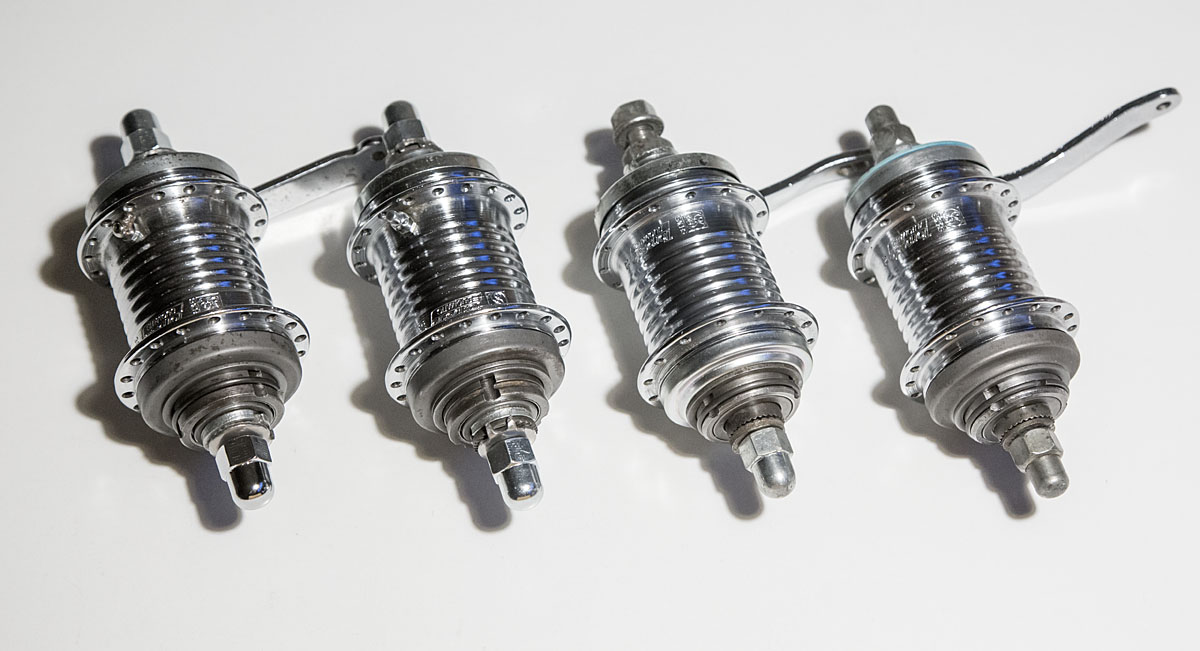
From left to right: The Fichtel & Sachs Torpedo Duomatic model 102, the 101 (without coaster brake), the R2110 and the A2110 (automatic gear shift version of the R2110). This page also covers the later SRAM Automatix that is mechanically similar to the A2110.
- Model 102 was produced from 1964 to 1973. Early production units have "Torpedo" engraved or stamped on the hub shell using a cursive font, later production switched to block letters.
- Model 101 was produced from 1964 to 1970. A limited number was produced compared to the 102, so very few exists today.
- Model R2110 was produced from 1973 to 1984.
- Model A2110 was produced from 1974 to 1984. A limited number was produced compared to the R2110, so few exists today.
- SRAM Automatix was produced from 2011 to 2017. Four versions existed: With coaster brake, roller brake, disc brake (alu hub shell, 32H) and without a brake.
Torpedo Duomatic 102
This example produced in 1965 (Year code "H"), 36 holes, long axle version: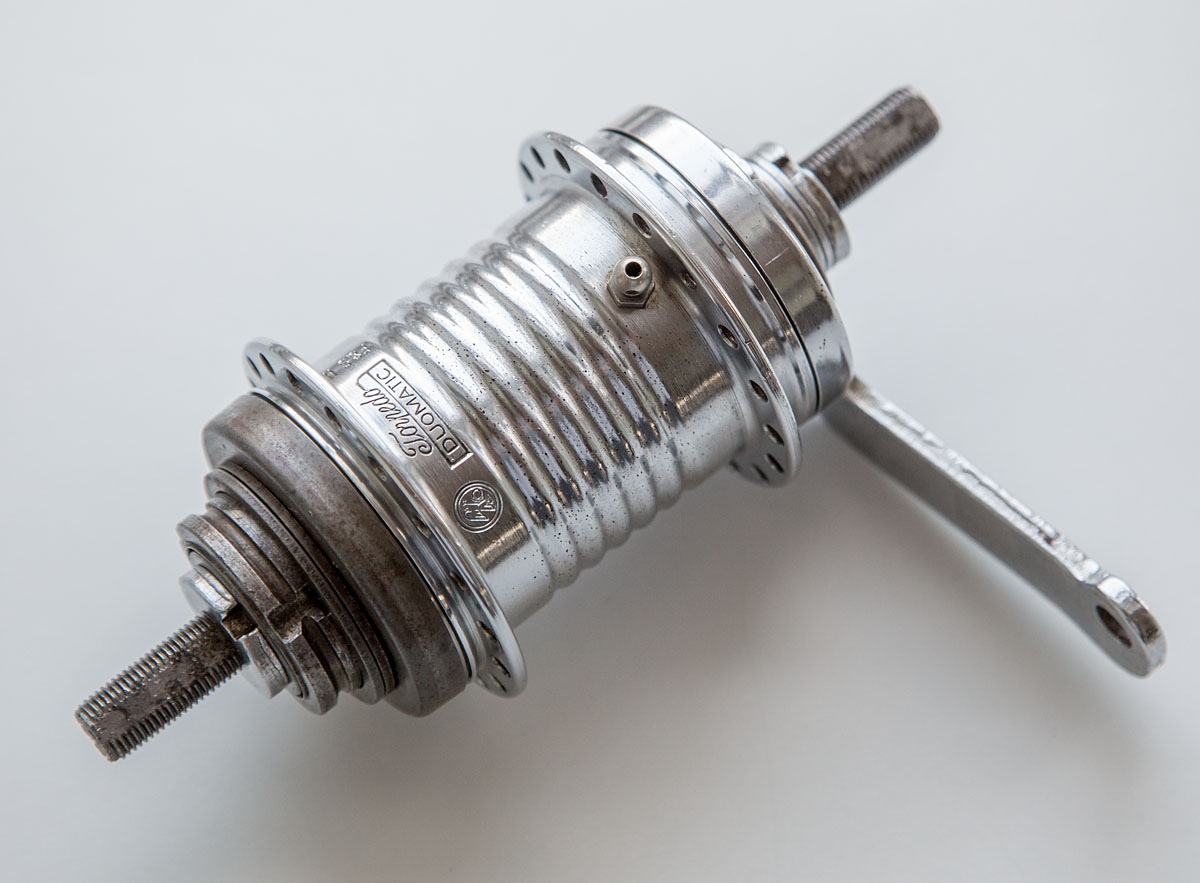
Disassembled:
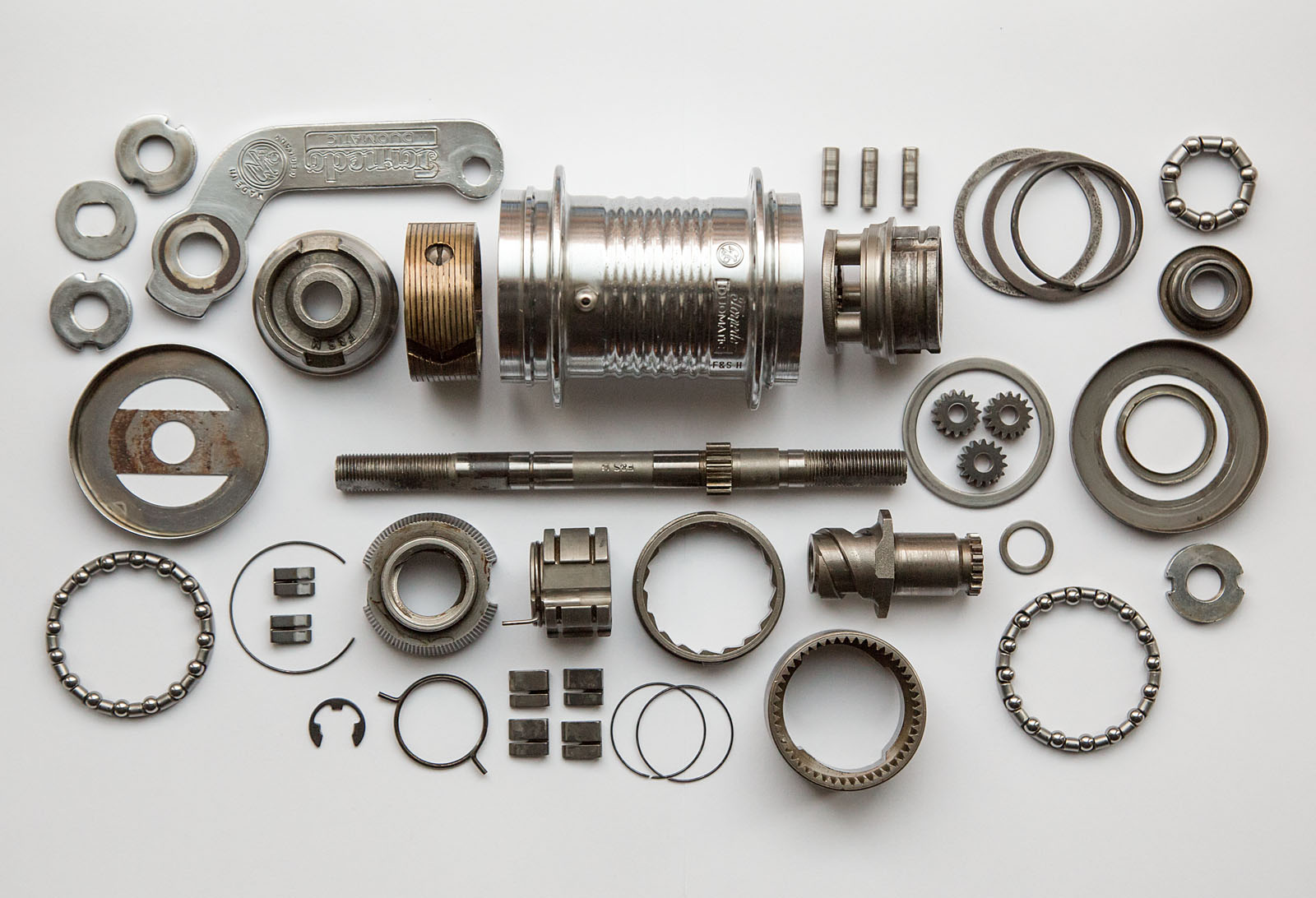
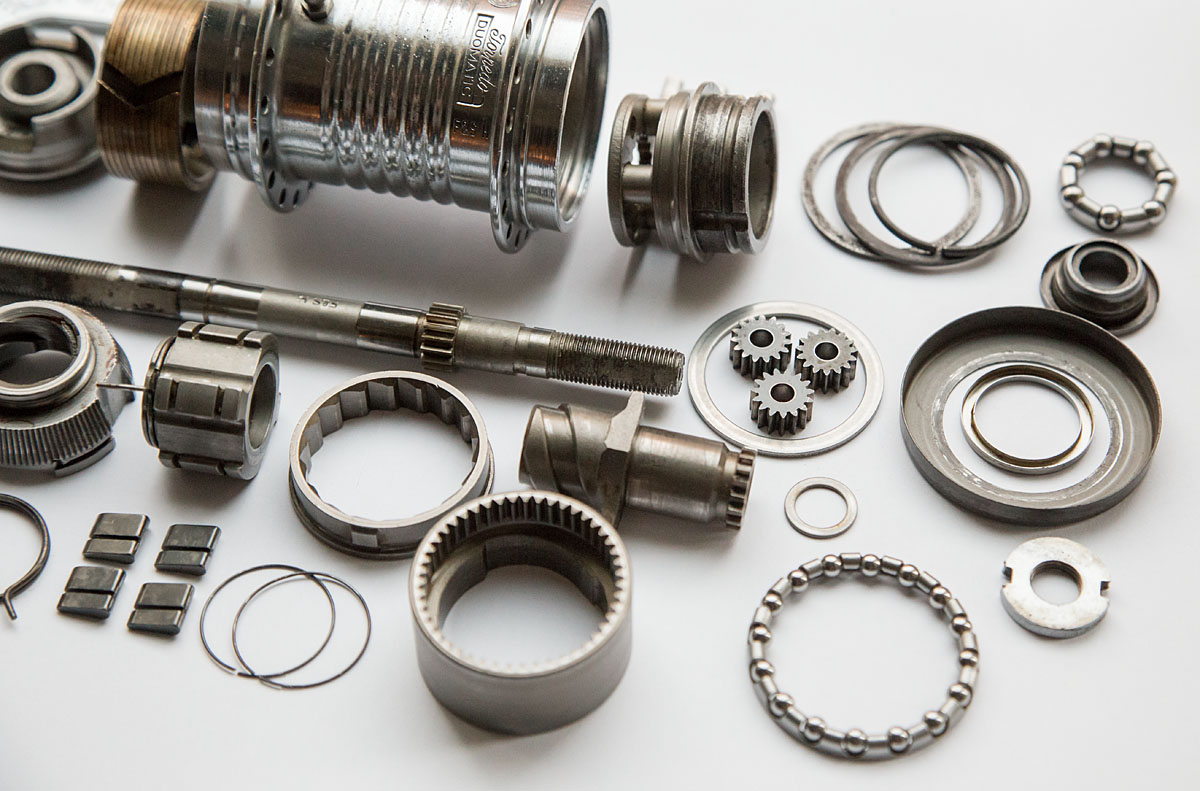
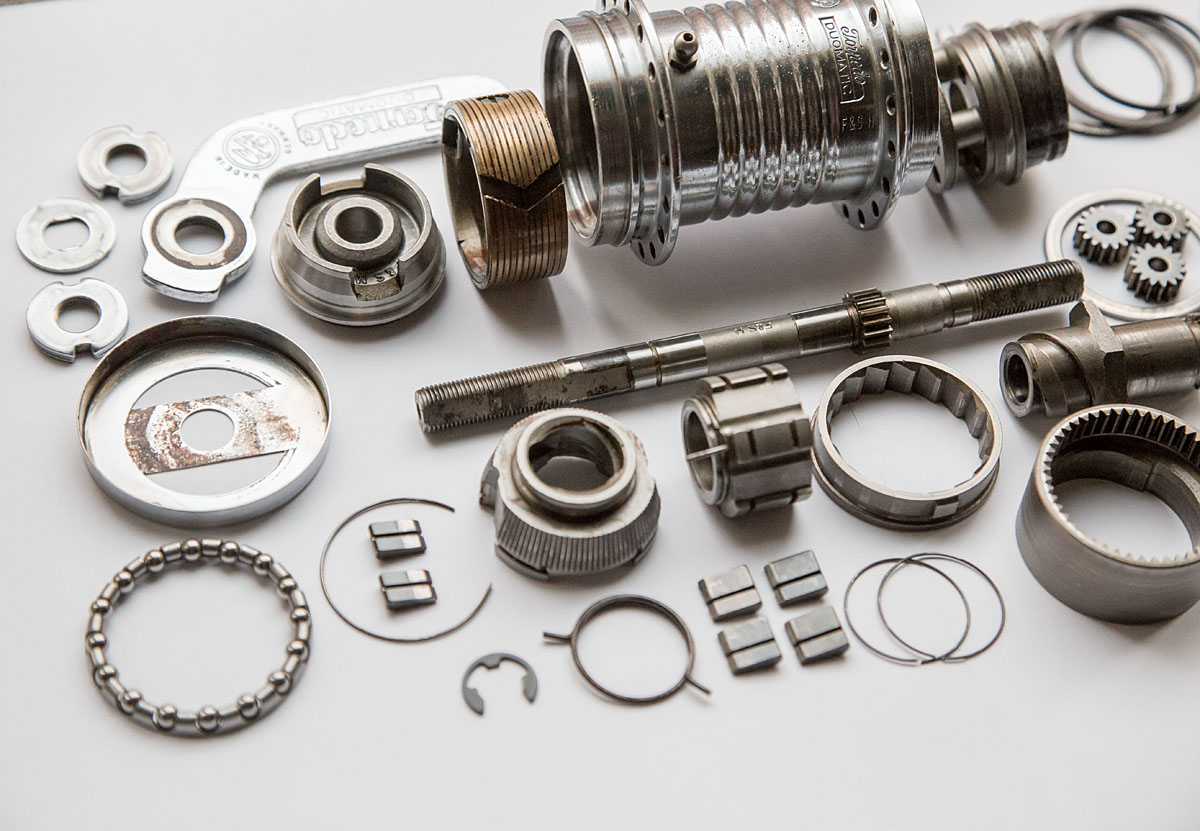
Torpedo Duomatic 101
This example produced in 1968 (Year code "L"), no coaster brake, 36 holes, long axle version: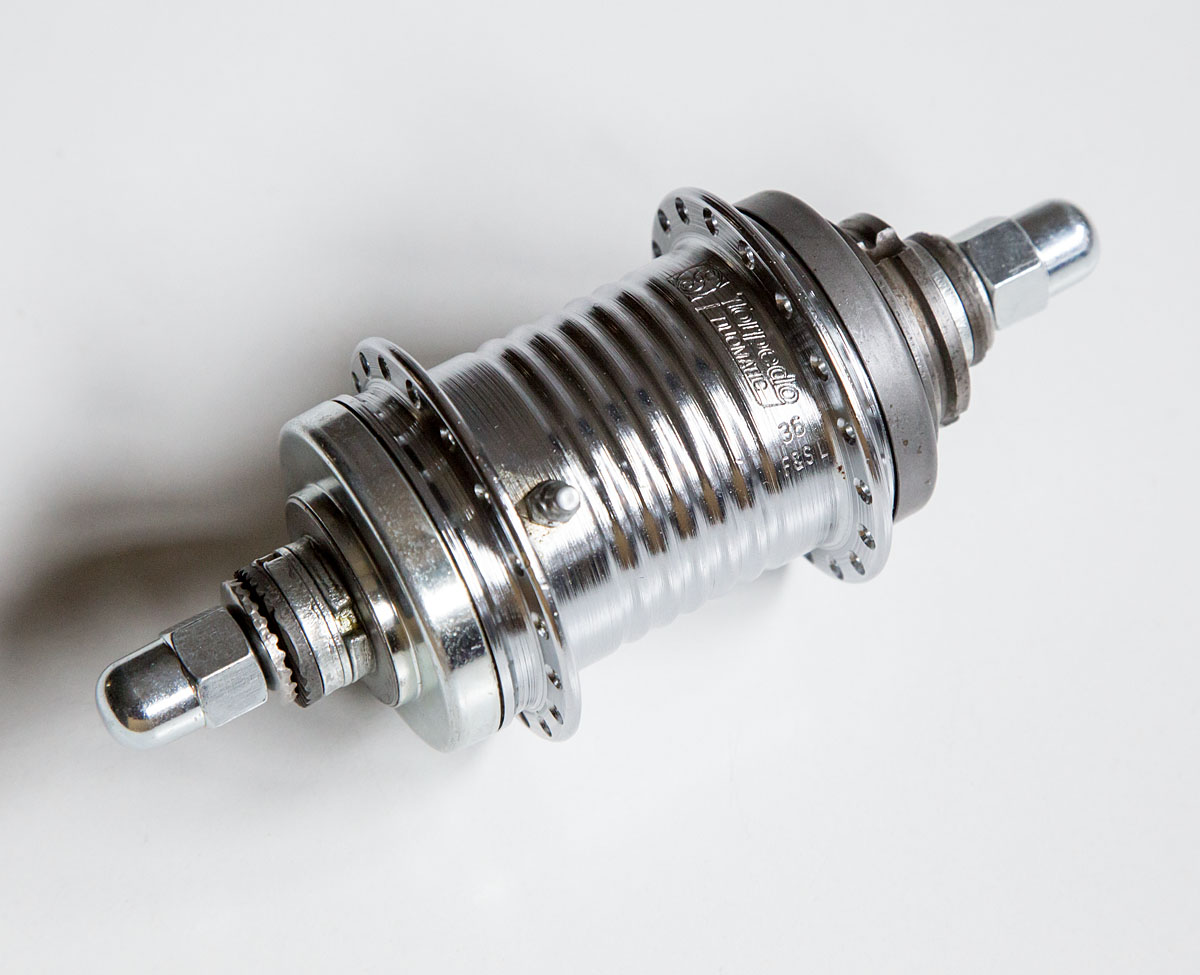
Mostly disassembled (see the Duomatic rebuild page for full disassembly photos, planet carrier sub-assembly and shifter sub-assembly is the same as the 102):
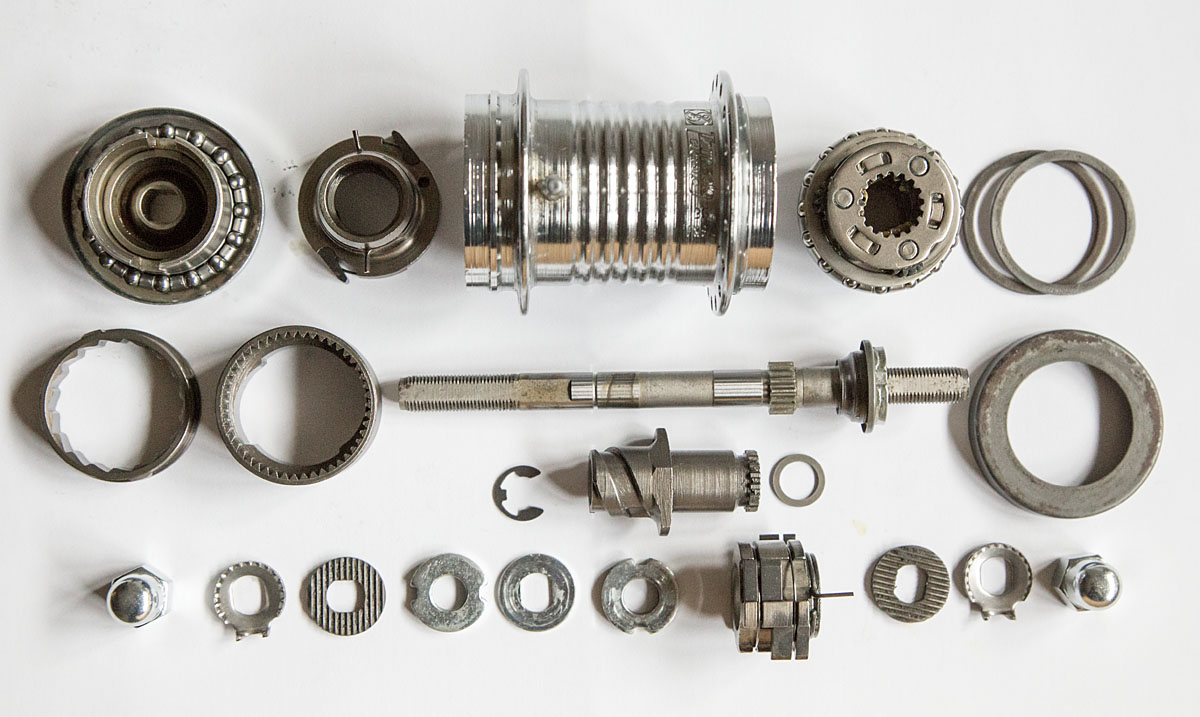
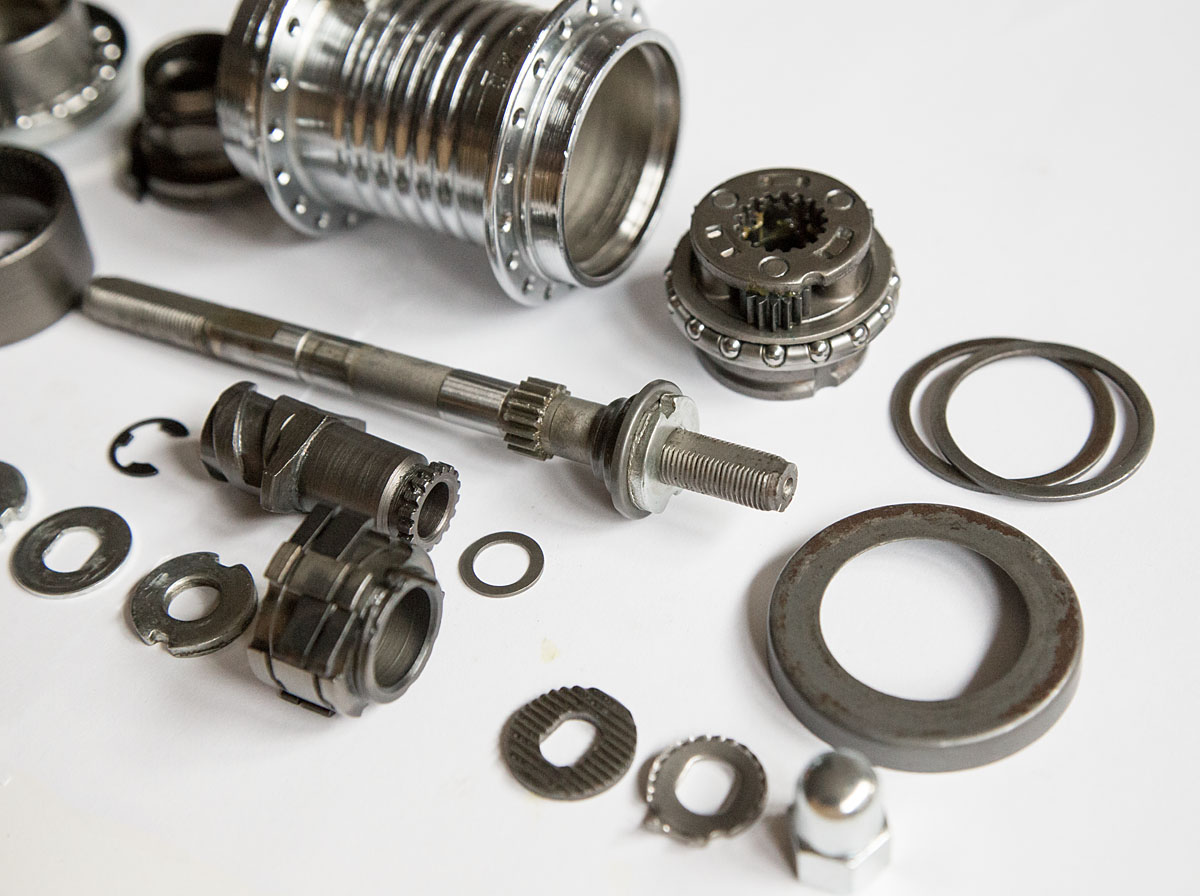
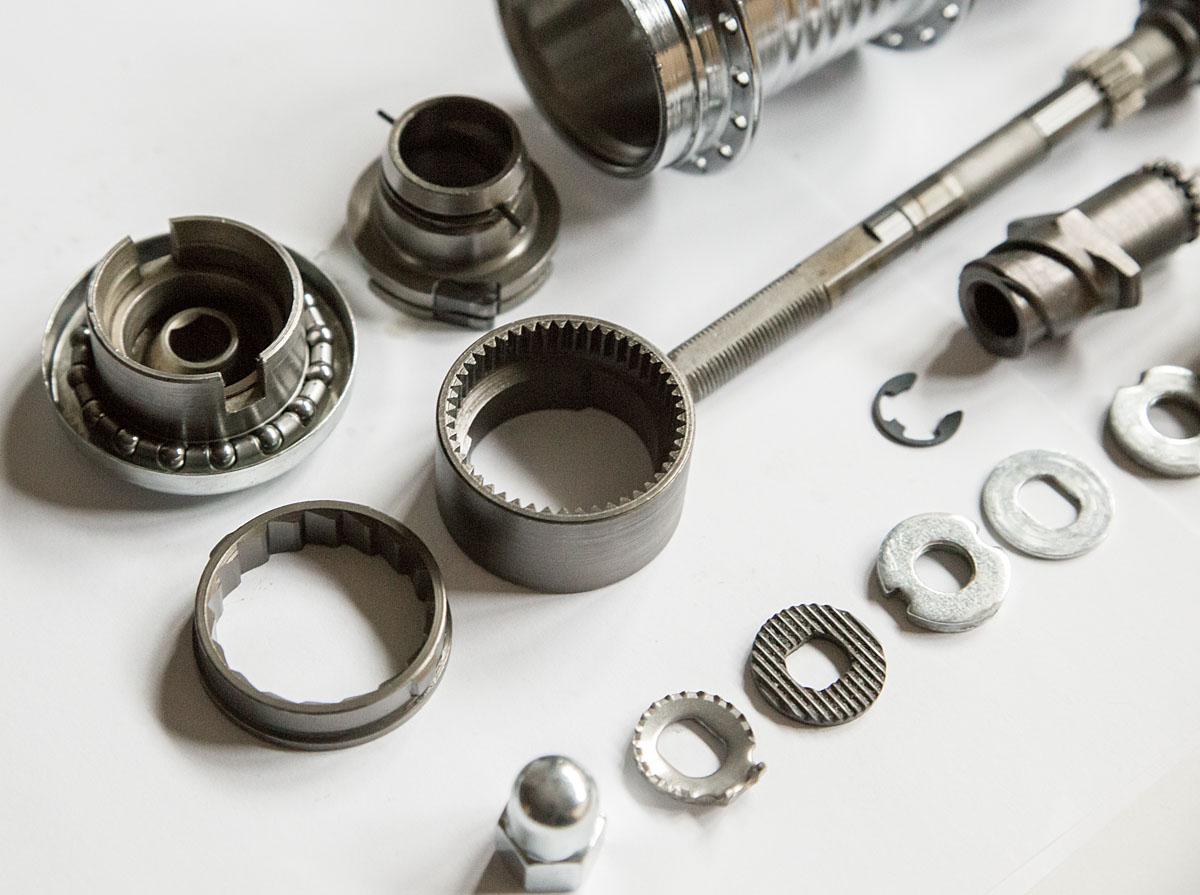
Note: Even though there is no coaster brake, there is a hard stop on the backpedal stroke after the shift point, so you cannot rotate the crank backwards to reposition your pedals while waiting at a red light.
Torpedo Duomatic R2110
This example produced in 1980 (Year code "Y"), 28 holes, long axle version: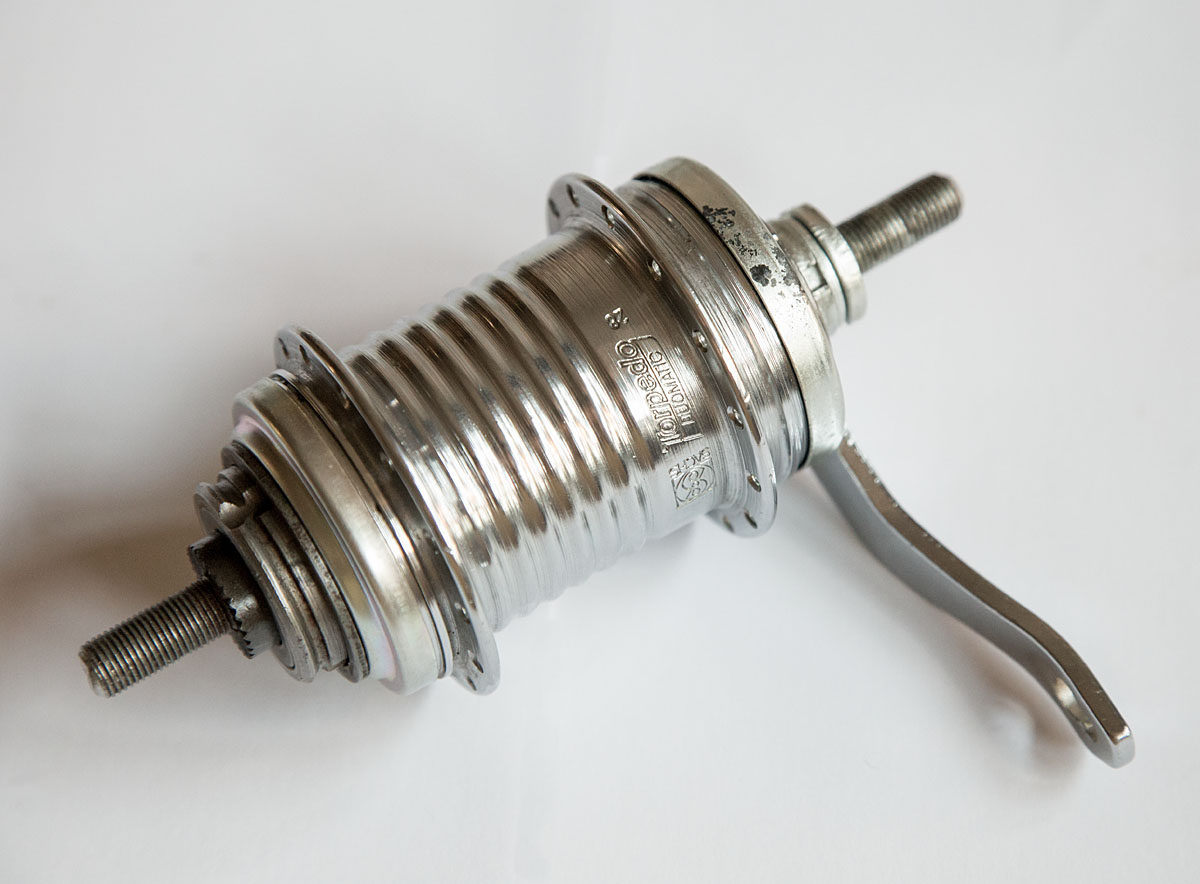
Mostly disassembled:
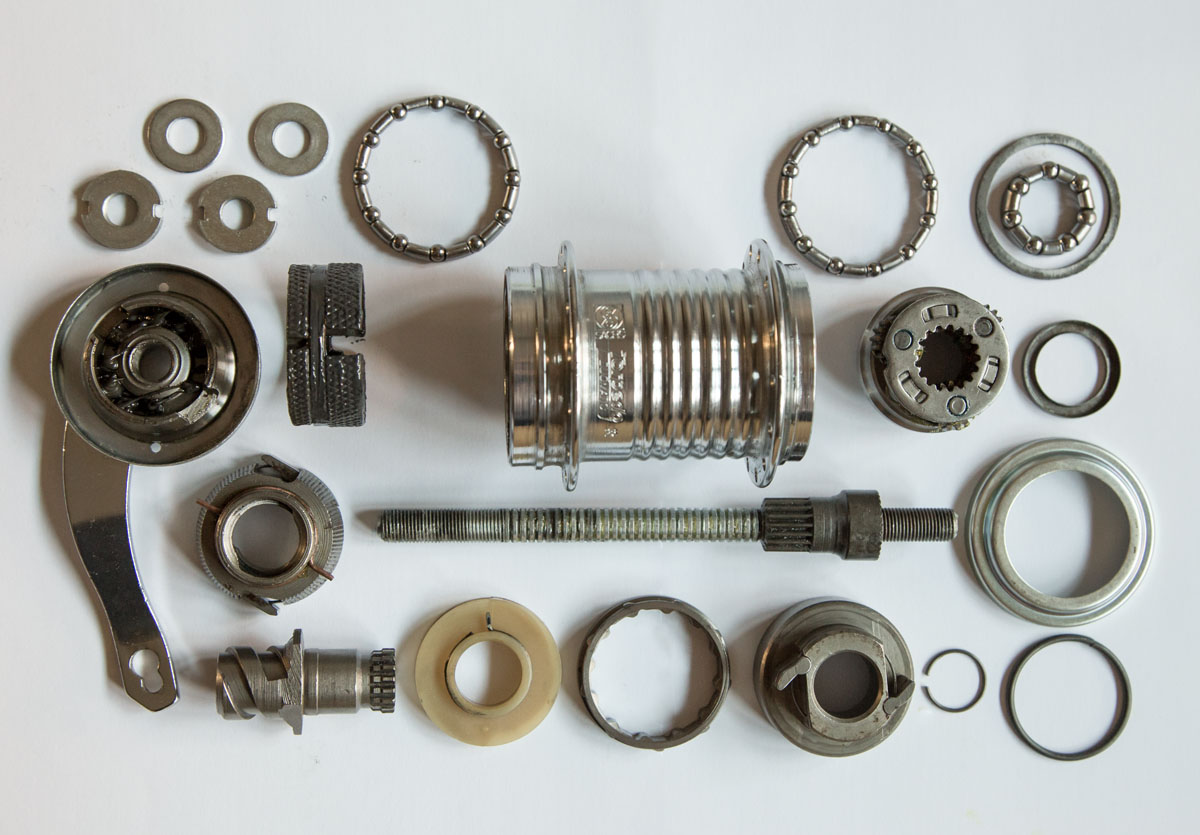

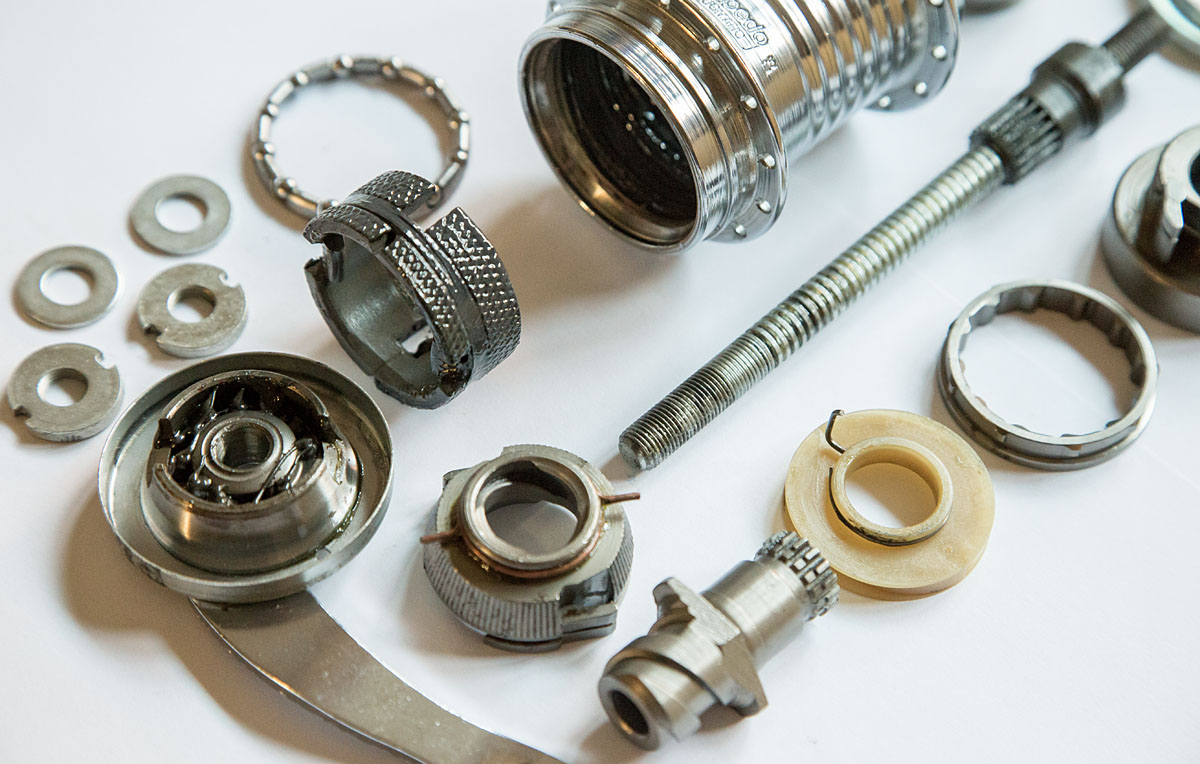
As it can be seen on the disassembly photos, the R2110 version of the Duomatic hub only shares a few components with the previous model 102. Many components were simplified, probably to require fewer machining operations to manufacture the parts.
Torpedo Automatic A2110
This example produced in 1981 (Year code "Z"), 36 holes, short axle, blue banderole version (meant for 26-28 inch wheels, shifts earlier than the red version):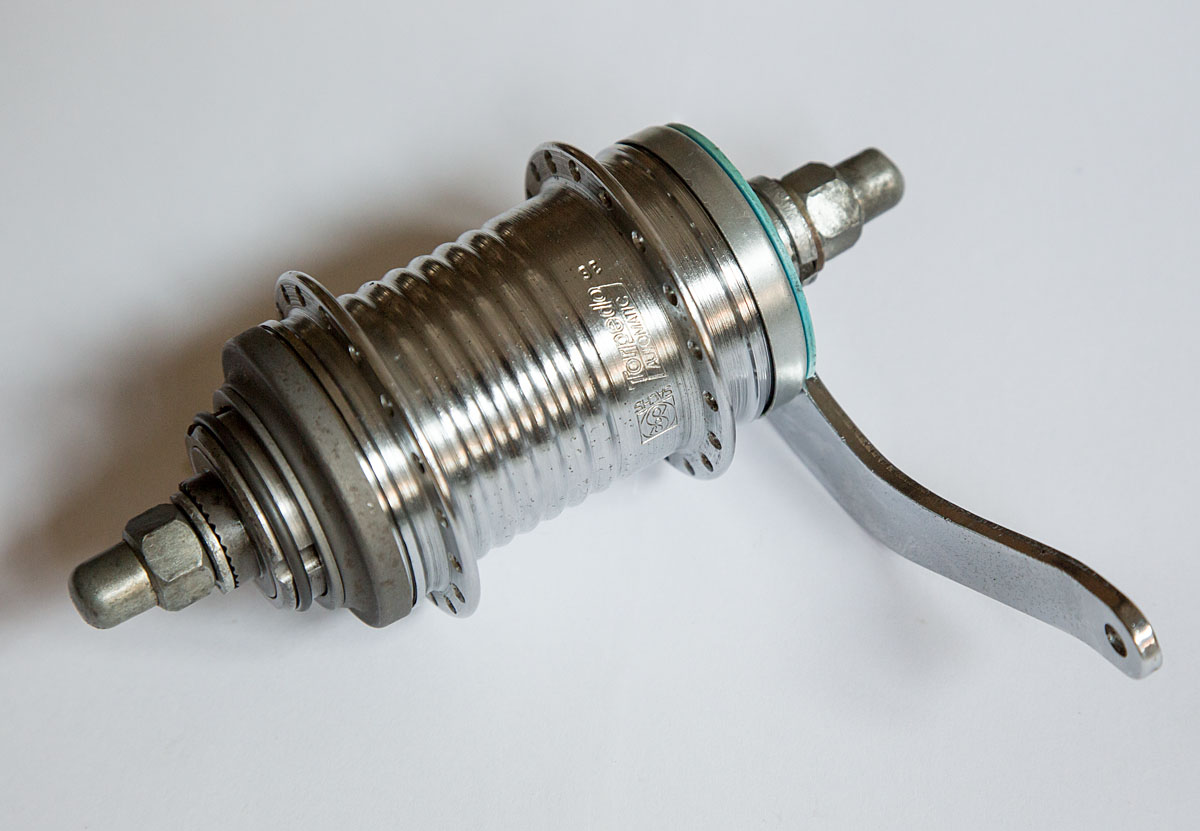
Almost completely disassembled (centrifugal clutch sub-assembly kept together, as well as the brake reaction arm and left bearing cone):
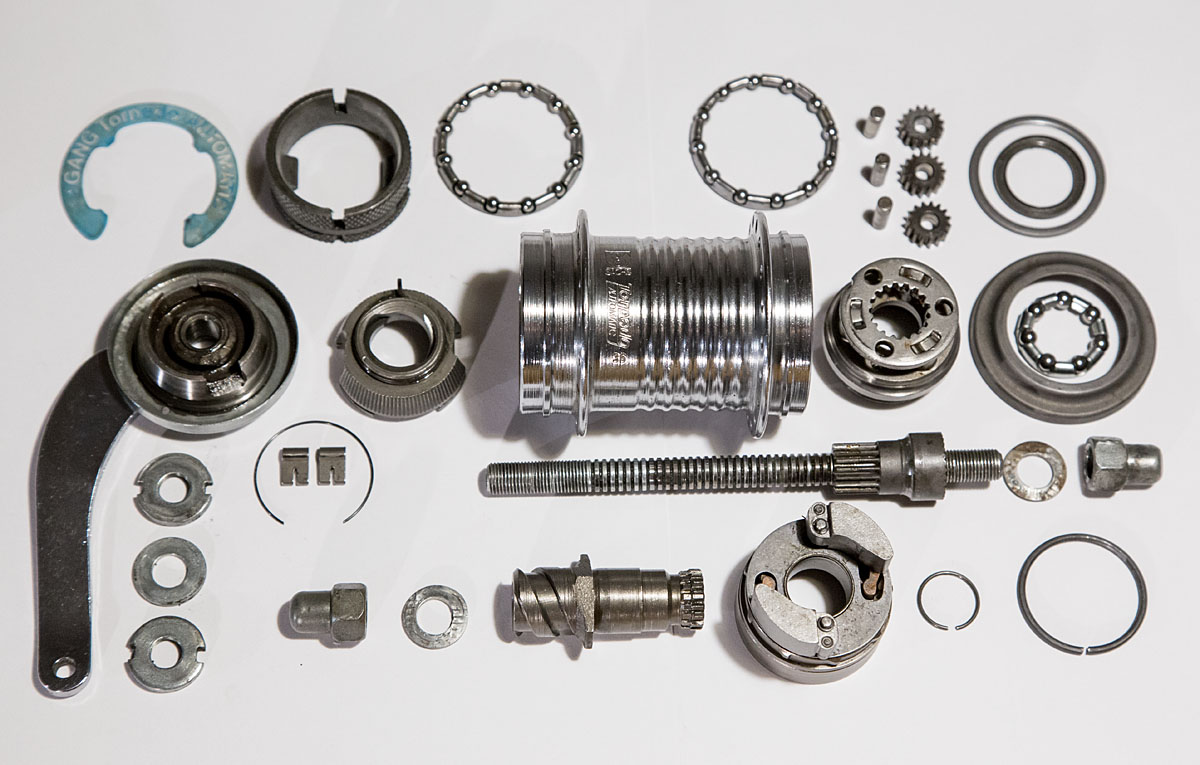
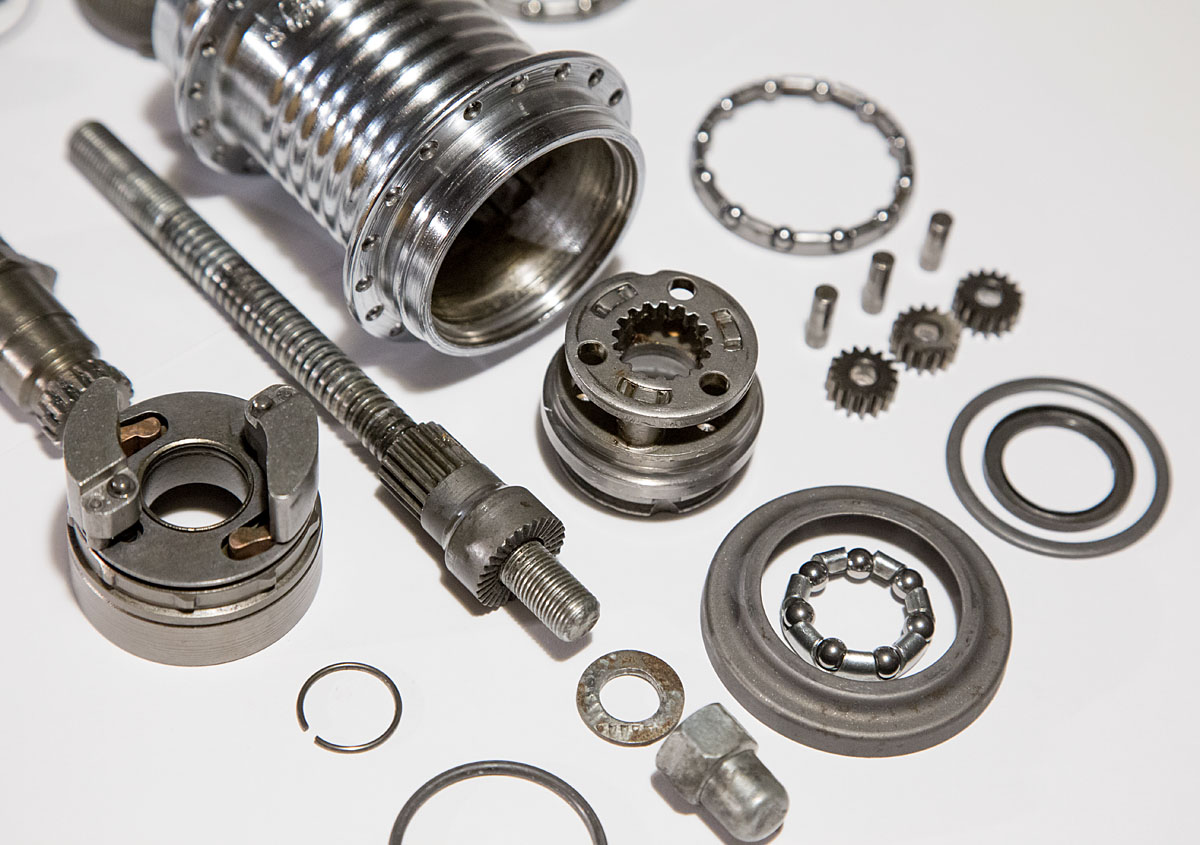
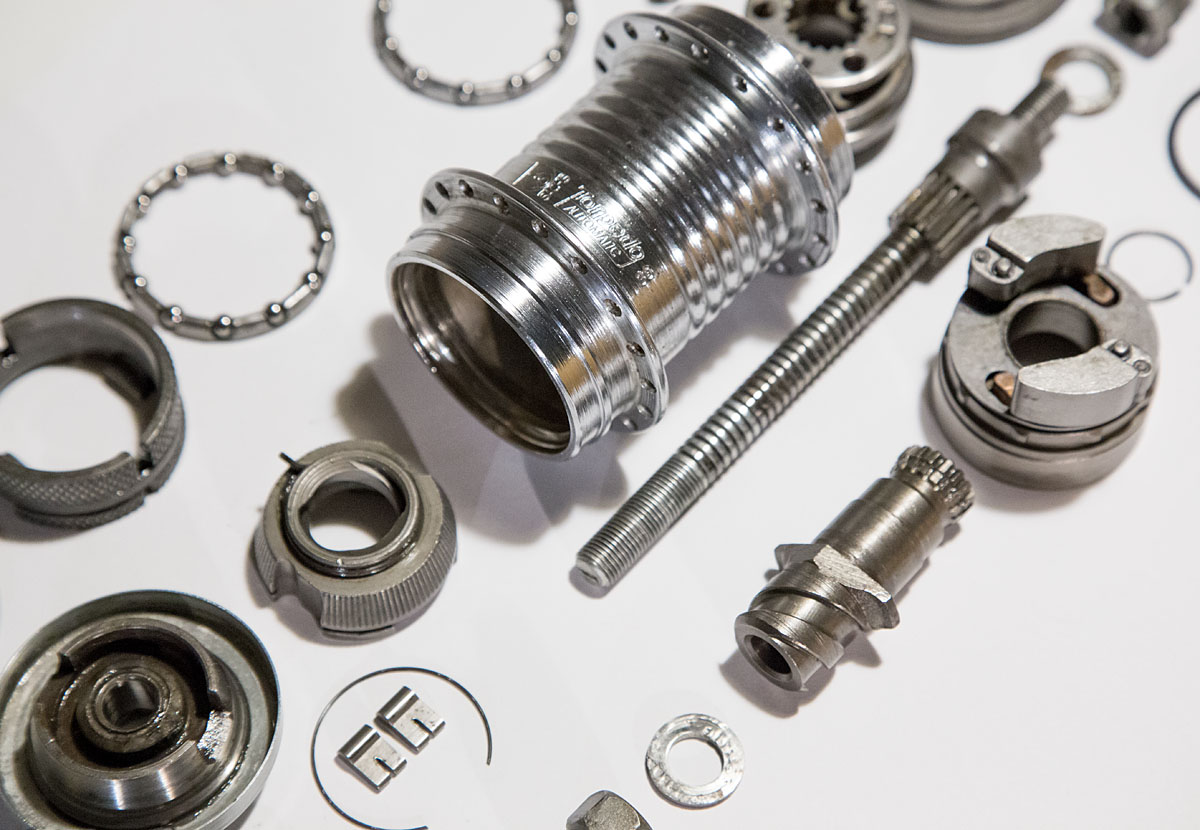
SRAM Automatix
These three examples are for 36 spokes (32 for the alu hub shell) and shifts earlier than the 28H steel hub shell versions. Same mechanical principle as the older A2110 and a few parts are even compatible: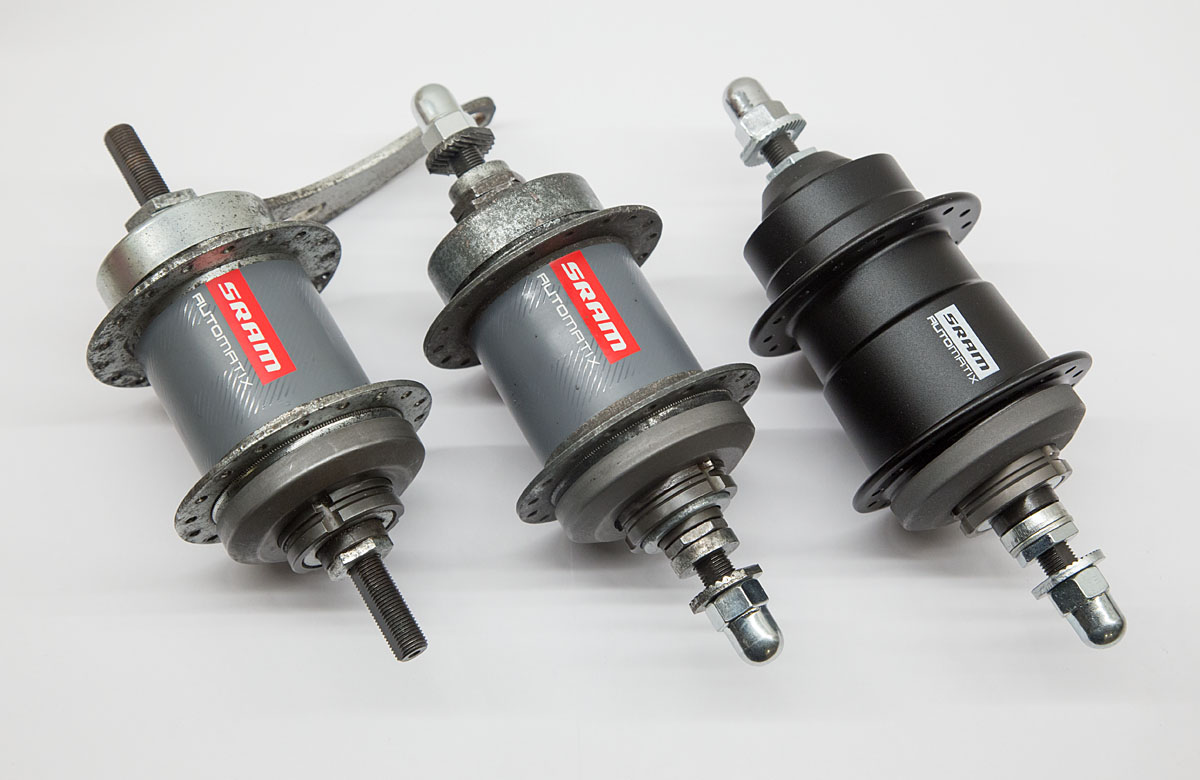
The completely disassembled brakeless steel version of the hub:
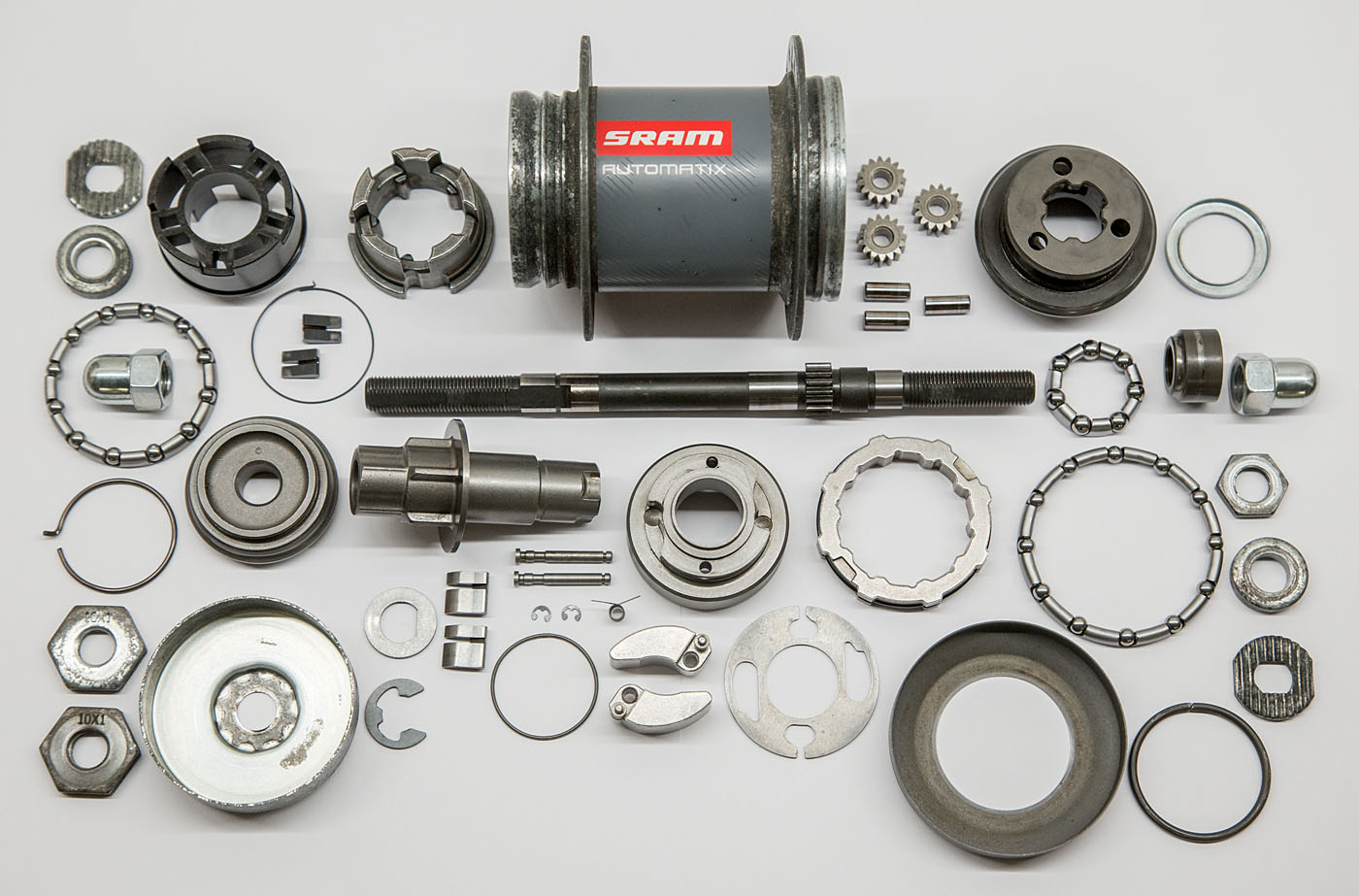
There is more information and pictures of the Automatix here.
Page last updated 2024-03-16 20:02. Some rights reserved (CC by 3.0)
